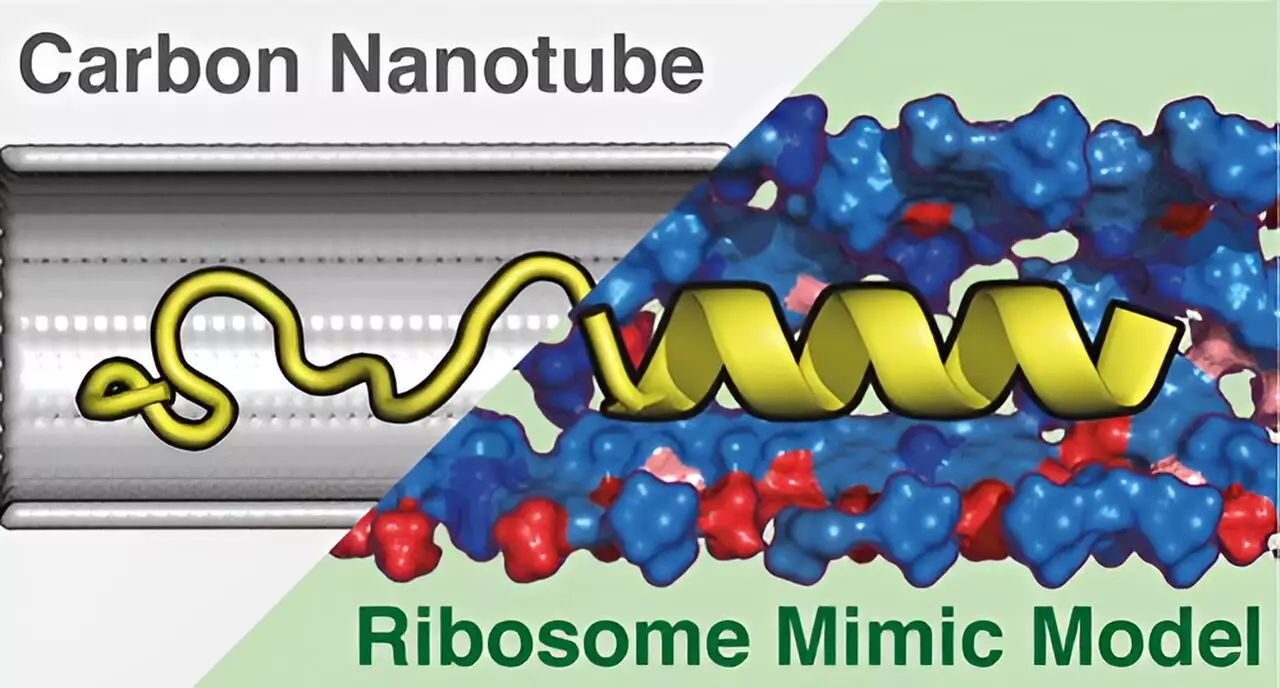The ribosome serves as a critical component within all living cells, acting as the site where proteins are synthesized. Researchers at the University of Tsukuba have embarked on a groundbreaking exploration by developing an innovative model that simulates the intricate environment of the ribosome’s essential structural feature—the tunnel through which nascent proteins are processed. This new approach leverages advanced computer simulations to reveal the significant chemical properties within the ribosome tunnel that influence protein formation during translation.
Understanding the mechanics of protein synthesis is integral to many fields of biological and medical research. Proteins play various roles in cellular functions, and their synthesis directly impacts the vitality and functionality of organisms. Evidence suggests that proteins can begin folding into their requisite three-dimensional structures even while still being synthesized within the ribosome tunnel. Yet, the precise mechanisms governing this crucial process have remained elusive, leading to a gap in our current understanding of protein synthesis.
To bridge this knowledge gap, the researchers meticulously analyzed previously documented three-dimensional structures of ribosome tunnels. Their work culminated in the creation of the Ribosome Environment Mimicking Model (REMM), designed to closely align with the intricate chemical properties and inner diameters characteristic of ribosomal structures. Unlike conventional models, such as carbon nanotubes (CNTs), which only mimic the physical shape, REMM delves deeper into replicating the chemical nuances that are fundamental for accurate protein synthesis modeling.
By employing molecular dynamics simulations to probe both the REMM and CNT models, the researchers discovered that the REMM produced a more accurate representation of protein structures found within the ribosomal tunnel than its CNT counterpart. This advance emphasizes the pivotal role of chemical diversity inherent within REMM as a factor enhancing fidelity in simulating experimental outcomes regarding protein folding and configuration. It becomes clear that these nuanced chemical features are not simply additional details but rather major determinants in understanding how proteins achieve their functional forms.
With the successful application of the REMM documented, further refinements are anticipated, which promise to unveil even greater insights into protein conformations and behaviors in living cells. This research not only propels forward our comprehension of protein synthesis but also lays a foundation for potential applications in drug development and biochemistry. The synergy of computational modeling with practical biochemical insights indicates a new horizon of possibilities in understanding life at the molecular level.
The collaborative efforts at the University of Tsukuba illustrate the transformative potential of innovative modeling techniques in explicating the complexities of ribosomal function and protein synthesis. As researchers continue to refine their methodologies, we may yet unlock further secrets that govern life’s fundamental processes.

